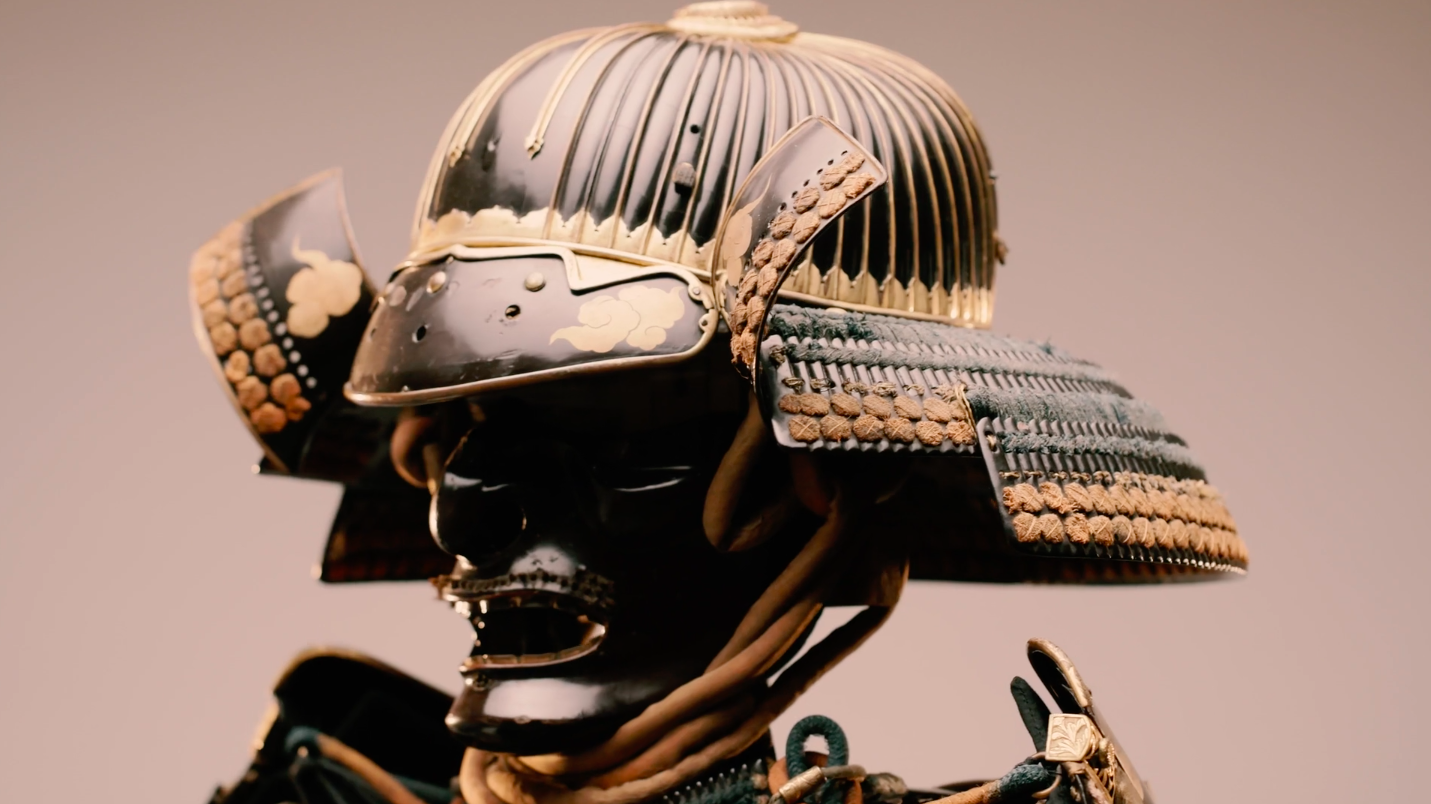Seeing the Samurai: A Japanese Diplomatic Gift

This samurai armour was the first diplomatic gift from Japan to Britain. It was sent to James I in 1613 by Shōgun Tokugawa Hidetada, military ruler of Japan, with adocument allowing the British to trade and settle there.
An impressive and costly present, it is made from silk lacing joining small iron pieces to create a flexible and lightweight covering. Unusually, the armour retains its original blue and red silk – a rare survival, because the material is so fragile and often has to be replaced.
The pumpkin-shaped helmet includes a raised area at the rear to accommodate the samurai hairstyle, with hair in a queue or topknot. With its fearsome face mask, the armour evokes the dignified culture of the samurai elite, who for some 700 years ruled Japan on behalf of the imperial family.
The armour was conserved with 36 other pieces of Japanese arms and armour for publication in Japan: Courts and Culture (2020) and our exhibition at The Queen’s Gallery, Buckingham Palace.
Short film about the samurai armour ©







